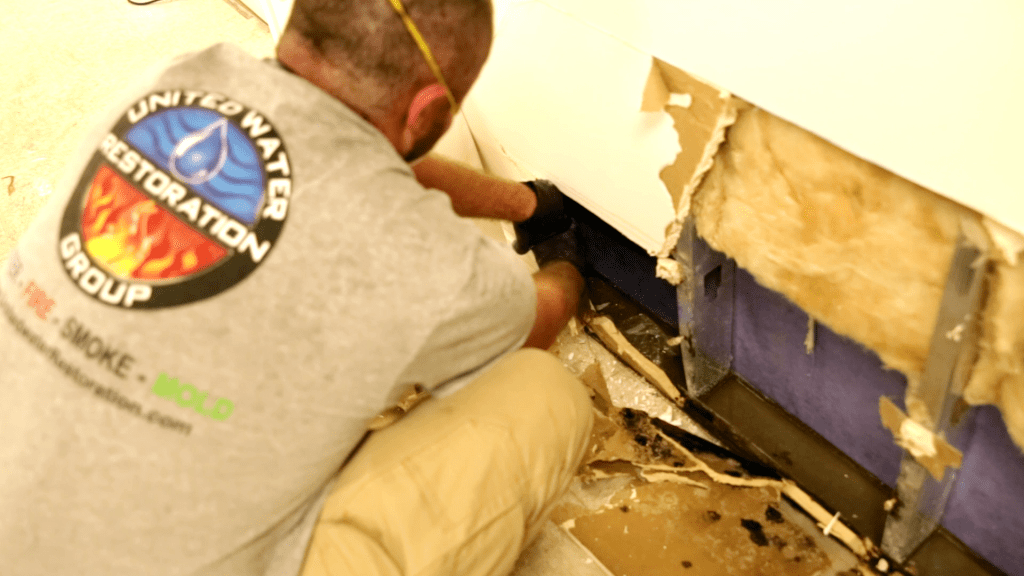Property owners who do not have prior experience with mold problems may not be sure what to expect during mold remediation. This five-point checklist starts with professional mold testing and sheds some light on each subsequent stage of the process to remove mold.
The highest quality mold remediation should begin with sampling and lab analysis and proceed through careful cleanup and restoration of primary water damage and secondary mold damage.
1. Mold Testing
There are many do-it-yourself mold tests available for sale, but none of these home kits are as accurate as lab testing. Even the most expensive kits may deliver false results because mold spores are present everywhere. When a mold testing specialist visits a structure where mold is suspected to be growing, he or she will take the air, bulk, or surface samples.
A lab will use these samples to identify the species and subspecies of mold present in a structure. This testing can also determine whether any mold is in an active growth cycle or is toxigenic.
Stachybotrys chartarum or toxic black mold and other toxigenic species may necessitate the use of personal protective equipment such as face masks and respirators in addition to staging equipment such as plastic sheeting to achieve negative air pressure and a decompression chamber. Removing protective equipment and disposing of cleaning equipment prior to entering areas in a structure that are not yet affected may stop an infestation from spreading.
2. Eliminate Moisture
It can take several days to receive the results of mold testing. In the meantime, it may be helpful to identify any sources of moisture that may be causing a mildewy odor or visible mold growth. Mold spores cannot multiply without a consistent supply of moisture and nutriment.
Water damage mitigation or mold experts may use thermal cameras or other leak detection technology to identify plumbing or roof leaks that have gone undetected. These leaks should be fixed as soon as it is safe to do so, as a mold problem will recur as long as moisture remains available. A dehumidifier is useful for maintaining low levels of relative indoor humidity in the 40% to 60% range, which will discourage mold from growing.
3. Mold Cleanup
Mold cleanup often involves the use of antifungal cleaning solutions and equipment designed to disturb colonies down to the root structure. Attempting to clean or disinfect surfaces on which mold is growing may not be enough to eliminate growth and prevent regrowth.
Even a bleach-based solution may not be useful for banishing mold. Quality mold remediation professionals may use brushes or sponges and specialized cleaning solutions to remove mold colonies alongside vacuums to extract spores.
It is necessary to ensure that every part of a structure is free of mold before restoration starts. This may involve checking for hidden growth behind walls or on the subfloor. It is difficult to eliminate every trace of mold from porous materials, so moldy carpeting and damp drywall and insulation may require replacement during the restoration process.
4. Damage Remediation
After all signs of mold are gone, it may be necessary to rebuild or repair any portions of a structure in which building materials have been torn out. Depending on the regional climate, property owners may want to have any building materials that are at-risk for supporting mold growth switched out for materials that are designed to have antifungal properties. Mold is less likely to grow on treated or non-organic materials.
5. Mold Prevention
Mold may start to grow again if conditions that caused it to flourish the first time around remain unchanged. The most effective way to prevent mold is to lower the level of ambient moisture and avoid leaving water damage standing for days prior to mitigation and cleanup. Other preventative measures may involve applying antifungal treatments or installing mold-resistant building materials.
There are several reasons why property owners should not attempt to clean up the mold. It is impossible to determine whether visible growth is the full extent of an infestation. Accurate identification is also only possible with results obtained through laboratory testing. United Water Restoration connects property owners with testing specialists and quality mold remediation professionals. Experts can guide property owners through these five stages of remediation and ensure that a mold problem is gone for good.
We provide services in Ormond Beach, Florida, Jacksonville, Florida, Daytona Beach, Florida, Orlando, Florida, Tampa, Florida, Melbourne, Florida, and many other locations around Florida!





